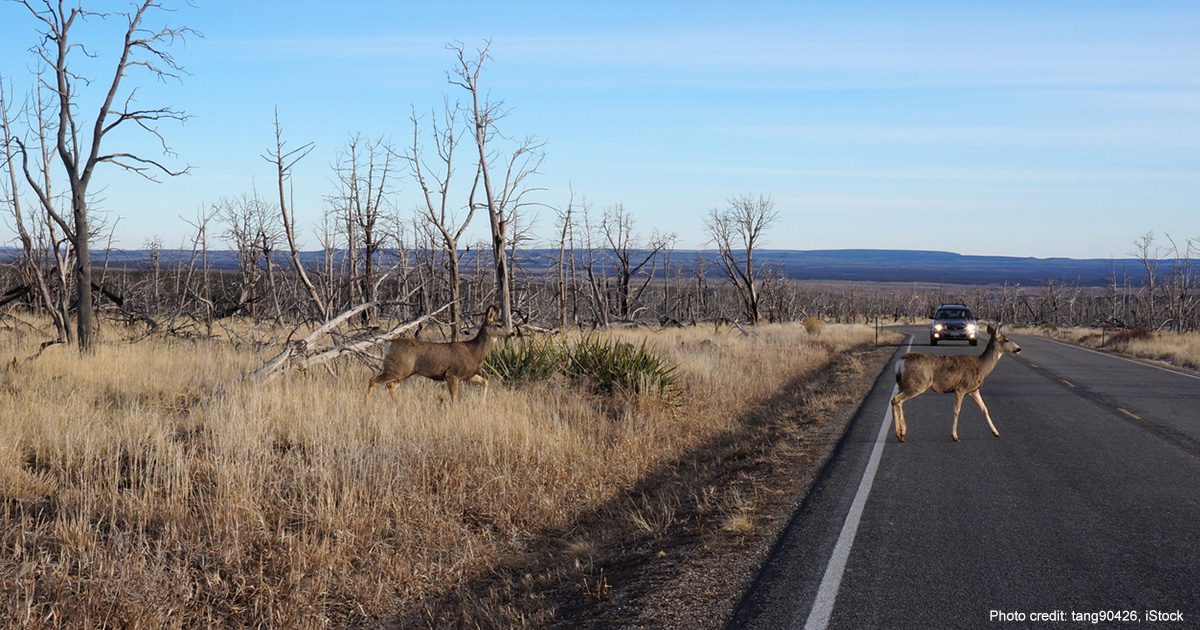
Apr 04, 2024 Roadkill: Citizen Science at Work
In 1992, Brewster Bartlett, a science teacher at Pinkerton Academy in New Hampshire, started a citizen science project encouraging his students to use email. Driving back to the school one day, he passed a dead skunk on the side of the road. He decided that having his students identify and report the dead animals they saw along a particular road would stimulate their curiosity and interest in local wildlife. The project would be designed for Pinkerton and other regional school students to report the information collected on their roadkill sitings using email, providing the opportunity to teach email use. Bartlett checked with the New Hampshire Fish and Game Department to determine if they had a roadkill project and learned they did not bother with the smaller dead animals but did count dead deer and moose. The project earned him the nickname Dr. Splatt. Unfortunately, the data the students collected while he taught at Pinkerton Academy are no longer available. However, others picked up Dr Splatt’s focus, and the number of academic publications on roadkill has increased 7-fold since he launched his citizen science project.
A recent paper describing roadkill patterns in Lithuania from 2007 to 2022 reported that almost 50,000 mammals were killed in vehicle-animal collisions on Lithuanian roads over this period. Deer, moose, and other ungulates accounted for more than 50% of the dead animals. More than a thousand carcasses of domestic dogs, foxes, raccoon dogs, and hedgehogs were also identified. During COVID-19 restrictions, the number of mammals killed on urban roads in Lithuania was higher than expected, and the lockdowns did not appear to affect animal road avoidance.
In contrast, a paper looking at roadkill in the UK reported that wildlife-vehicle collisions were 80% lower than expected during the COVID-19 lockdowns (during what is now commonly referred to as the “Anthropause”).
Roadkill data in Austria is the subject of another recent paper. While Statistics Austria collects data on the number of huntable species killed on the roads, the authors were interested in amphibian, reptile, and small mammal roadkills. They launched a citizen science project to collect such data, consisting of 15,198 reports on 17,163 individual vertebrates submitted by 912 volunteers from 44 countries (although most data were collected in Austria). The Austrian study concluded that fewer animals were killed during the Covid lockdown. Following Project Splatter (UK), Animals under Wheels (BE), and the Taiwan Roadkill Observation Network, the Austrian data are also now publicly available.
Several US states currently record roadkill data and use such data to track wildlife population trends and identify hotspots of vehicle-animal collisions. The California Roadkill Observation System includes data on more than 30,000 traffic incidents involving wildlife. It is estimated that the cost of such incidents amounts to around $250 million a year. These costs could have probably been substantially reduced by installing fencing on 700 one-mile segments located on California’s roads. The roadkill data collected in California suggest that the state’s mule deer and coyote populations are declining. The data also indicate that vehicle collisions are the primary or secondary cause of death for mountain lions in the state.
There have been several proposed technical solutions to address wildlife-vehicle collisions. For example, several decades ago, it was suggested that reflectors placed on the side of roads to direct oncoming car lights into the vegetation on the roadside would reduce the incidence of animals (especially large ungulates) running into the road in front of an approaching vehicle. Such reflectors are relatively inexpensive to install and maintain along roads. Unfortunately, wildlife quickly habituates to the reflectors, and overall mortality is not reduced. A meta-analysis of measures to reduce wildlife mortality and car accidents concluded that inexpensive measures were ineffective and that fencing and crossing structures were the most effective approaches to mortality reduction.
It is interesting to see how widely roadkill data are being collected and, more importantly, how such data are used to improve road safety and track wildlife population trends.


